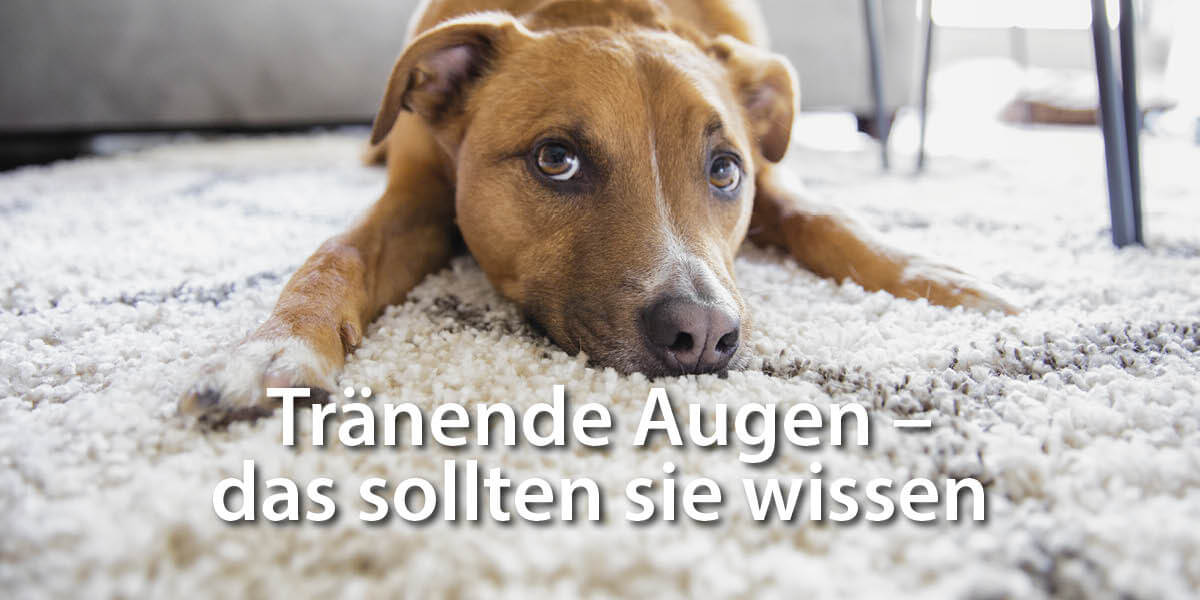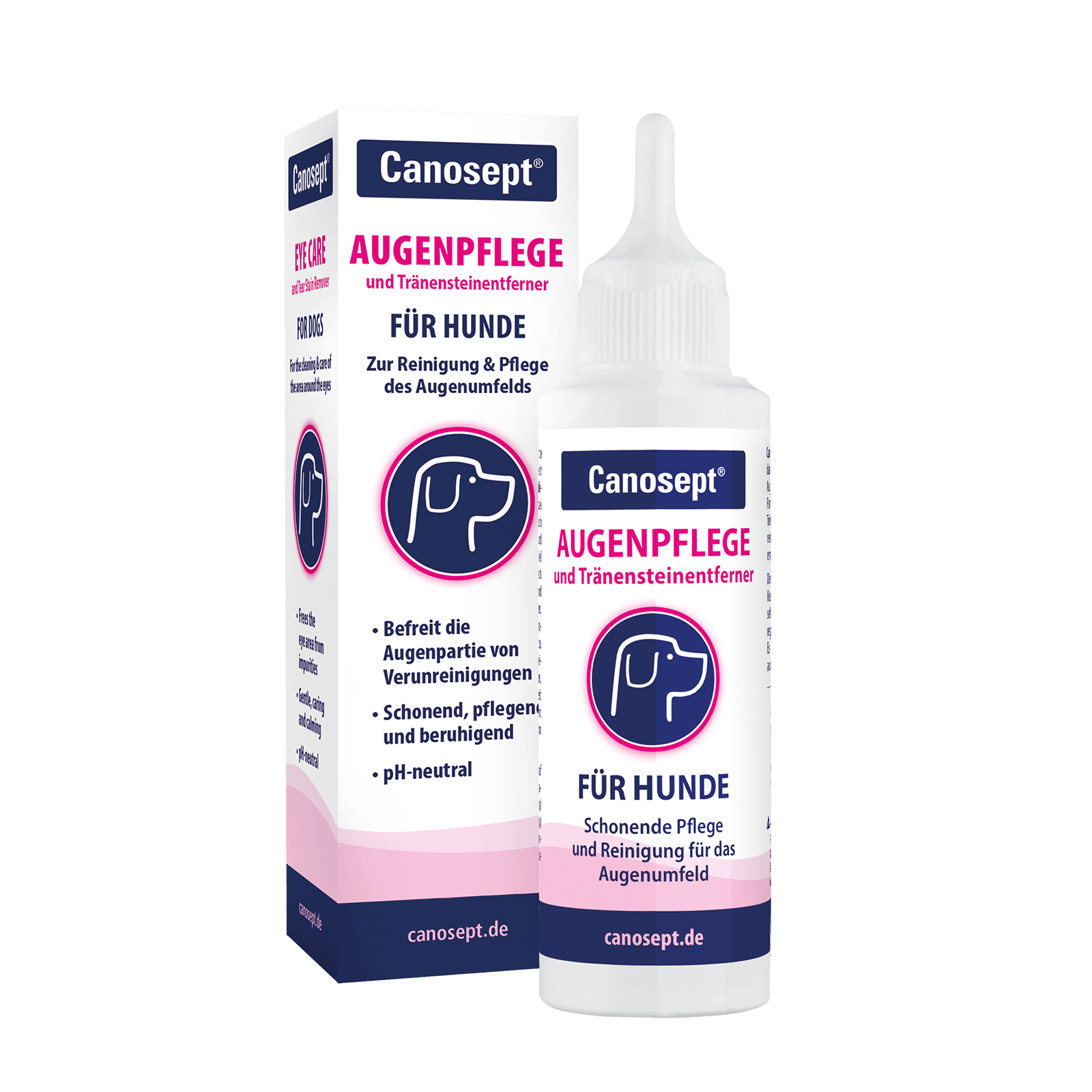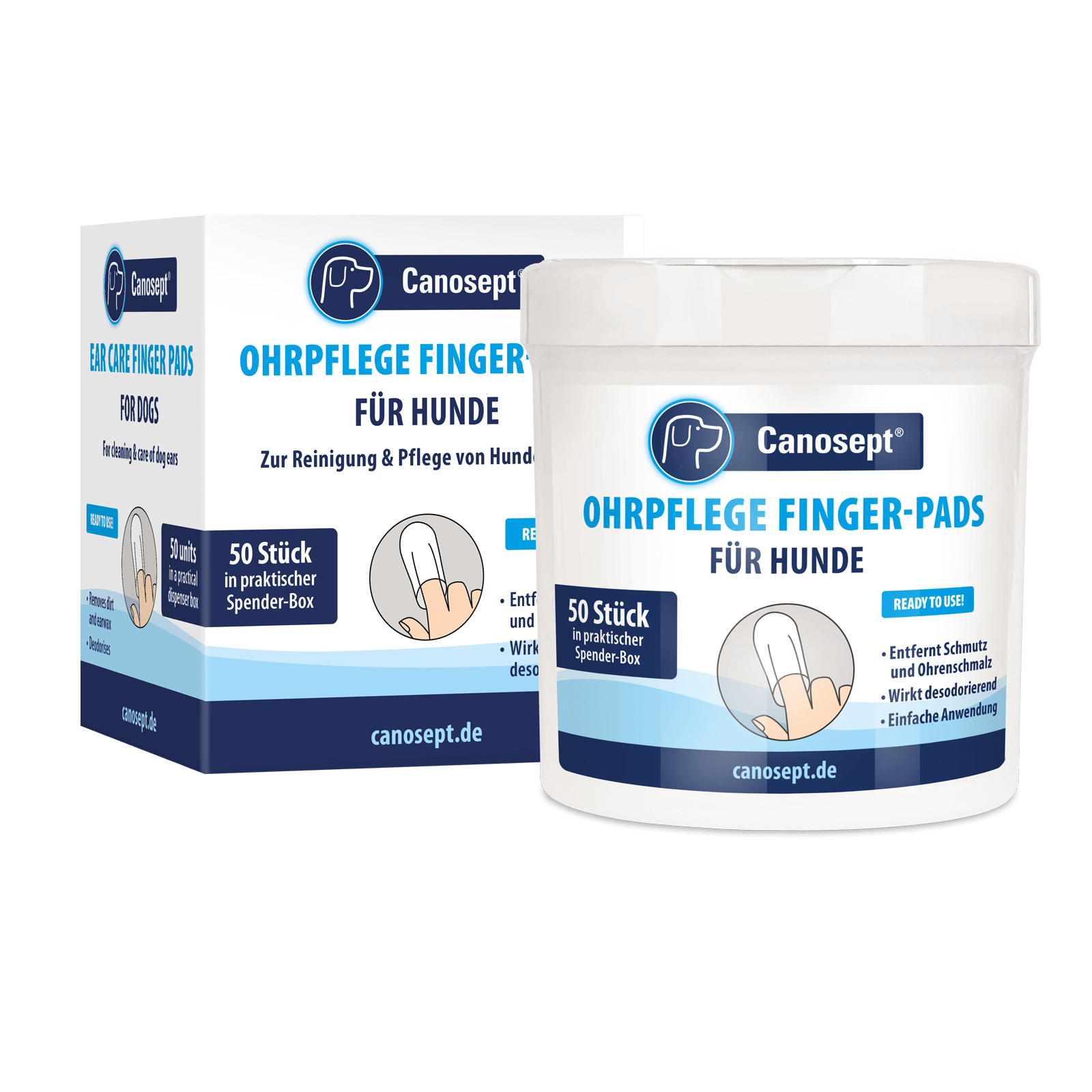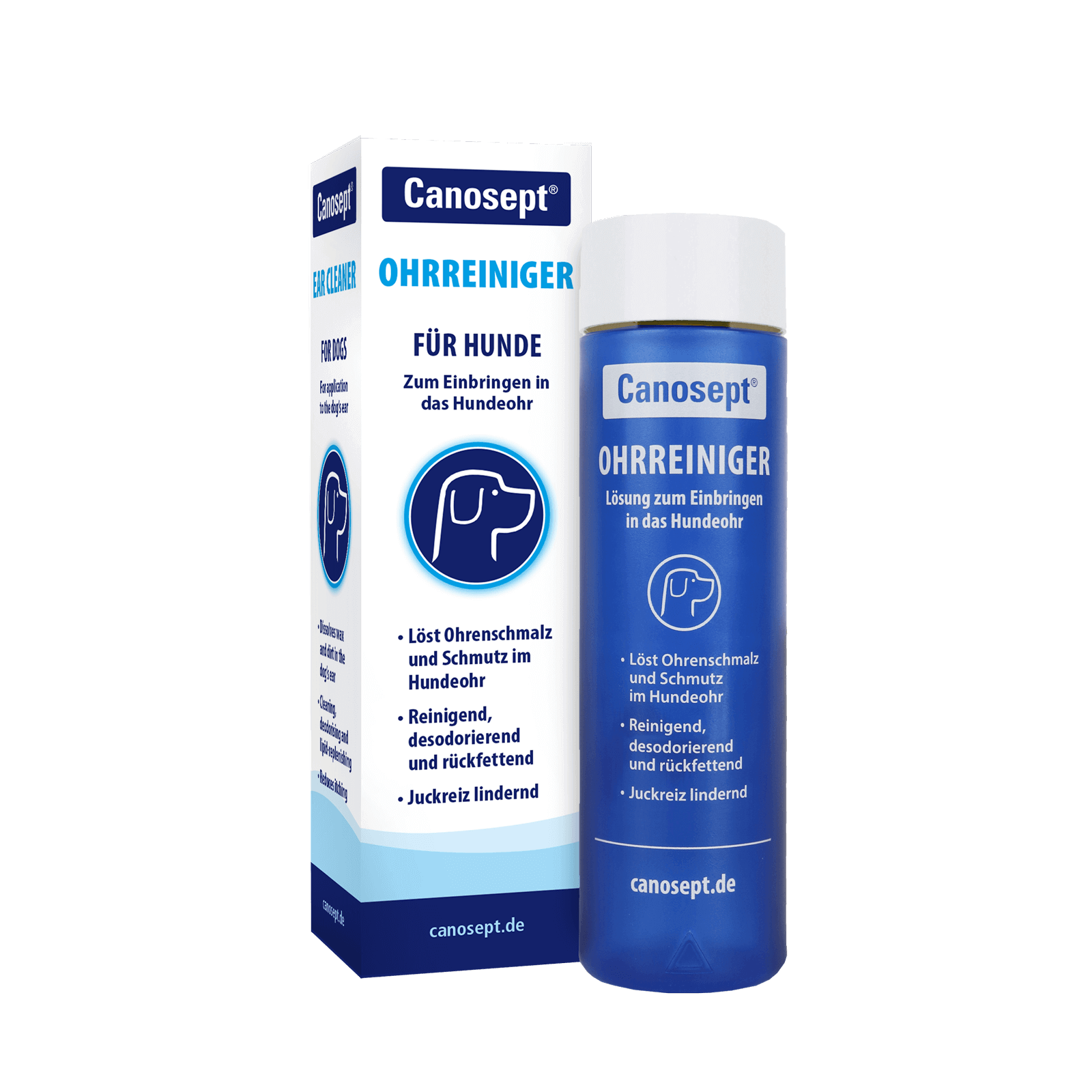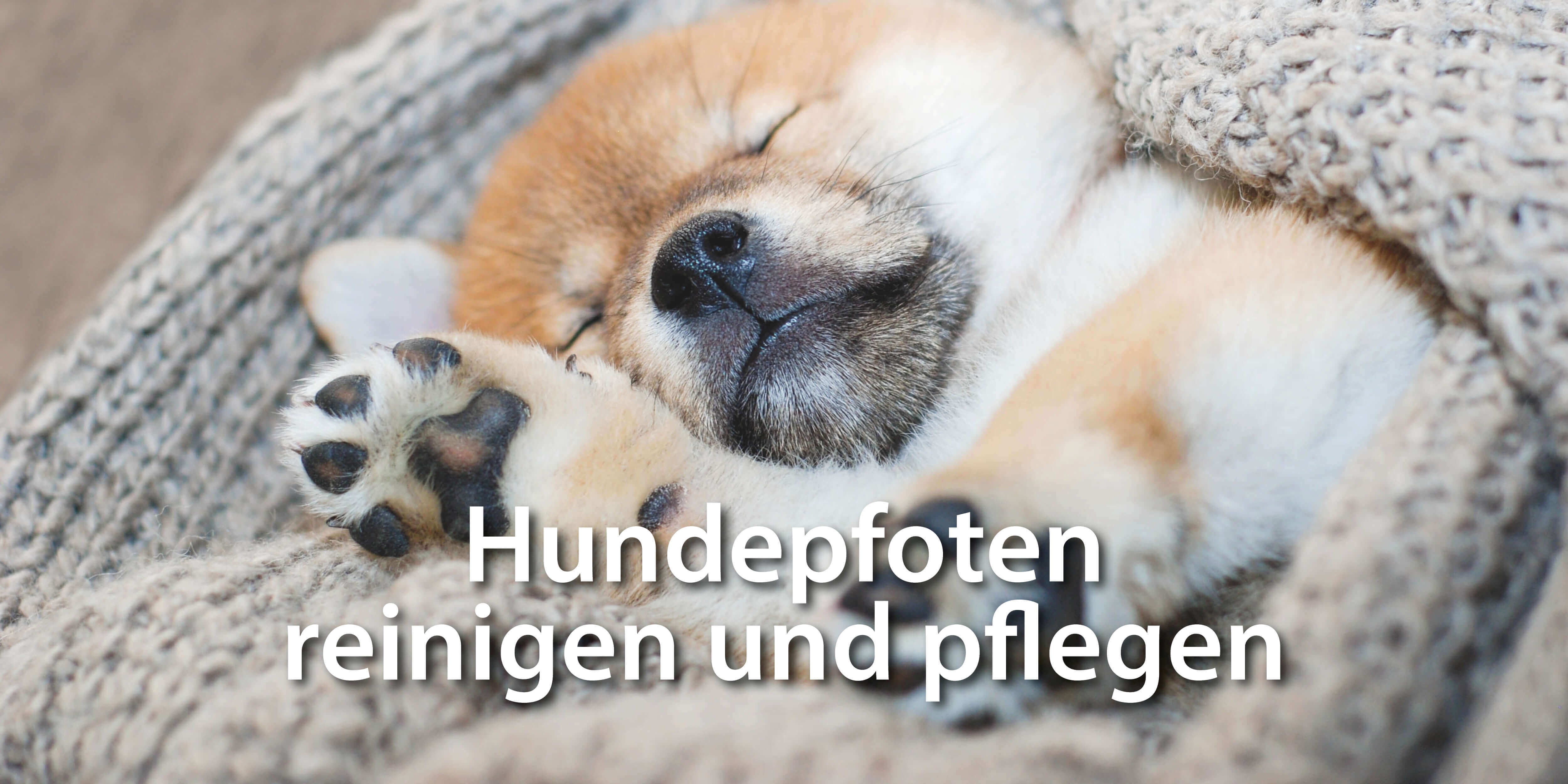- Why is my dog's eye watering?
- Which dog breeds have watery eyes?
- What can I do if my dog has watery eyes?
Why is my dog's eye watering?
Healthy dogs, like humans, constantly produce tears. These not only keep the eyes moist but also help flush out small foreign bodies .
Normally, tear fluid flows through a small opening in the eyelid, the punctum, via the nasolacrimal duct into the front of the nose. There, it evaporates or is licked away with the tongue.
Sometimes, however, it looks as if the dog is crying . In this case, the tear fluid doesn't drain through the nasolacrimal duct, but instead runs over the eyelid margin into the fur around the eyes. What you can do about tear stains in dogs .
Reasons for watery eyes in dogs
Watery eyes in dogs are not uncommon . Besides overproduction of tears or blockage or obstruction of the lacrimal puncta or nasolacrimal ducts, there are many other causes :
- Your dog sleeps with his eyes open
- Dry air, e.g. heating air
- Irritation of the eyes, e.g. due to foreign bodies, drafts or dust
- Allergies, e.g. food allergies
- Breed-related changes
- Eye diseases

What do sick dog eyes look like?
Watery eyes in dogs occur for relatively harmless reasons , but can also be a sign of health problems. If the following symptoms occur, a visit to the veterinarian is essential :
- Prolonged watering of the eyes
- Individual changes in the appearance of the eyes, e.g. bloodshot or glassy
- Cloudy eyes
- Purulent tear fluid
- Mucous eye discharge
- Pupils of different sizes + constricted eyelids
Other symptoms are also important indicators of an eye condition. These include, for example , constant squinting , red or swollen eyes, frequent rubbing of one side of the eyes with the paw, or sensitivity to touch. Always compare both eyes, as external influences usually only cause changes on one side.
Common diseases of the dog's eye
In principle, eye diseases
- Race-related, also hereditary,
- systemic/internal diseases that (also) manifest in the eyes or
- caused by external injuries to eyelids, cornea, etc.
Below, we present some of the most common eye diseases that can occur depending on the dog's breed and age. Early treatment can prevent chronic and often permanent eye damage.

Conjunctivitis
Conjunctivae can become inflamed due to drafts or allergies , among other things. Noxious substances (= substances with damaging effects) such as sand and wind, and other foreign bodies , can also be causes. As can infections with bacteria, viruses, or fungi. In puppies and young dogs , the formation of blisters on the nictitating membrane is a common cause.
How do I recognize conjunctivitis in my dog?
Conjunctivitis is usually recognizable by noticeable redness of the mucous membrane. The inner eyelids are very red. This is accompanied by increased eye discharge . Other symptoms in dogs include squinting , sensitivity to light, and rubbing the eyes with the paw .
Dry eye ( keratoconjunctivitis sicca )
Dry eyes are caused by reduced tear production . This means that the cornea and the mucous membrane above it are not sufficiently moistened with tears. The eyelids therefore constantly rub against the dry cornea. This is not only uncomfortable for the dog, but also damages the cornea and causes pain .
Short-nosed dogs, such as bulldogs and Maltese dogs, are more prone to dry eyes. However, it can occur in any breed, especially with age. If dry eyes occur, you should always consult your veterinarian to determine if there is a systematic condition.
Increased circumference of the eyelid margin
Increased eyelid margin size is a sign of aging and usually affects the lower eyelid. It is a benign adenoma (a tumor of mucous membrane or glandular tissue) of the sebaceous glands.
This tumor acts like a foreign body and, over time, damages the cornea , potentially leading to drooping eyelids . To prevent this from happening, swift action is required. See your veterinarian promptly, as it requires veterinary examination and treatment.
Drooping eyelid (ectropion)
Entropion is an inward-rolling lower eyelid . Colloquially known as a rolling eyelid, it is usually a congenital malposition of the eyelids.
Rolling eyelids cause damage to the cornea because the skin and eyelashes rub against it. The eyelids don't close completely. This makes it easier for foreign bodies to enter the eyelid, and the cornea dries out.
Depending on the severity, this can be uncomfortable or even very painful for the dog. Dry corneas, conjunctivitis , and chronic corneal defects are the consequences. A rolling eyelid should be presented to the doctor's office and treatment options discussed.

Which dog breeds have watery eyes?
Any dog , regardless of breed or age, can suffer from watery eyes from time to time. There are various reasons for this. However, there are some dog breeds that are more likely to experience watery eyes.
| Affected dog breeds (examples) | Reason |
|---|---|
| Labradors, Rottweilers, etc. | In these dog breeds the eyelid occasionally rolls inwards (rolling eyelid) |
| Mastiffs, St. Bernards, etc. | The lower eyelid hangs down in these breeds (drooping eyelid) |
| French Bulldog, Pug, etc. | Short-nosed dog breeds with protruding eyes |
| Long hair with undercoat | Husky, Golden Retriever |
| Pekingese, Maltese, etc. | The tear ducts often become blocked or too much tear fluid is produced |

What can I do if my dog has watery eyes?
If your dog has persistent watery eyes or unusual eye discharge, you should first consult your veterinarian to determine the cause . In addition to proper treatment, good eye care is also important.
To do this, regularly clean the fur around the eyes . This prevents further skin irritation and excessive hair stickiness. Gently wipe from the outer to the inner corner of the eyes.
Canosept eye care pads with aloe vera extract quickly and easily cleanse and care for the eye area. The pads remove dirt, dust, tear scum, and other impurities from the eye area, thereby cleansing the sebaceous gland outlet.
Use a separate care pad for each eye to avoid transferring dirt particles to the other eye.
Blockages in the tear ducts can usually be cleared with a special rinse . This should quickly resolve the excessive tearing of the eyes.
For dogs with droopy eyelids, drafts should be avoided . The environment should also be as dust-free as possible. Carefully trimming the fur around the eyes can also help with watery eyes. This is especially advisable for dogs with a lot of hair.
How often should I clean my dog's eyes?
We recommend cleaning your dog's eyes at least twice a week if tear flow is normal. If your dog's eyes are watering heavily, you can clean them more often. This also applies to dogs prone to tear stains , such as Maltese.
Which eye drops for dogs with watery eyes?
We recommend Canosept Eye Care . The pH-neutral formula gently cares for the eyes and removes impurities from the eye area. The hazelnut and cornflower extracts also soothe your dog's eyes.
The eye care product can also be used on sensitive and irritated skin. Regular use can prevent additional tear stains and unsightly watery eyes.
You can simply apply Canosept eye care to a cotton ball or use the ready-to-use care pads. Then gently dab the pads over the eye area, including the corners of the eyes. Then you can gently wipe away any softened deposits.

FAQ
Visit your veterinarian, determine the cause, and provide eye care. What else can you do for watery eyes?
You should clean your dog's eyes twice a week. You can adjust the frequency as needed. Learn more
We recommend Canosept eye care or Canosept eye care pads .
There are various reasons. Some of them are relatively harmless. However, watery eyes can also be a sign of an eye condition in your dog. However, you should always have your veterinarian determine the cause. Learn more about the possible causes.
For cleansing your eyes, we recommend Canosept Eye Care Pads and Canosept Eye Care Solution. Learn more about what to look for when cleansing the eye area.
.Conjunctivitis is usually recognizable by noticeable redness of the inner eyelids. Squinting and rubbing the eye with the paw may be other signs. Learn more about conjunctivitis in dogs.
Watery eyes can occur in any breed and at any age. However, some dog breeds are more prone to it than others. Here's an overview of which dog breeds commonly experience watery eyes.

